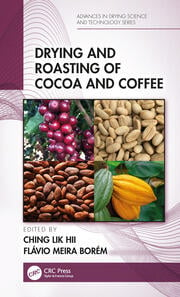ABSTRACT
This chapter presents the significant role of curing, with particular emphasis on the drying aspects, in the development of flavor and product quality of dried cocoa beans. It discusses the principles and practices of cocoa drying. Production volume can range from about 400 to 3000 kg dried beans per hectare per year depending on location, planting technology and agronomy practices. The fresh beans should be fermented and dried by following strict processing protocol that meets the requirements as desired by chocolate manufacturers not only in terms of physical but also chemical characteristics. The outer part of the flesh contains mucilaginous pulps that are rich in sugars which provide an optimal condition for the growth of microorganisms. During internal fermentation, enzymes and substrates are free to mix, and various reactions occur during the anaerobic and aerobic phases. Diffusion is the main mechanism of moisture transfer during falling rate periods and it is usually only a function of temperature.


